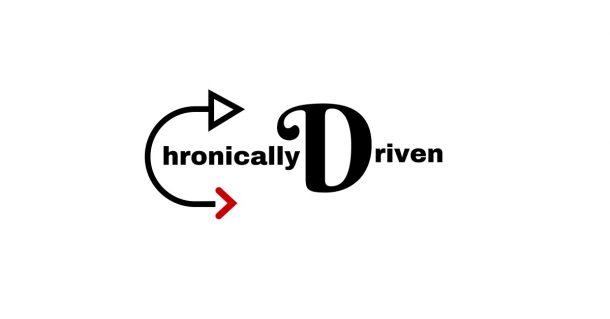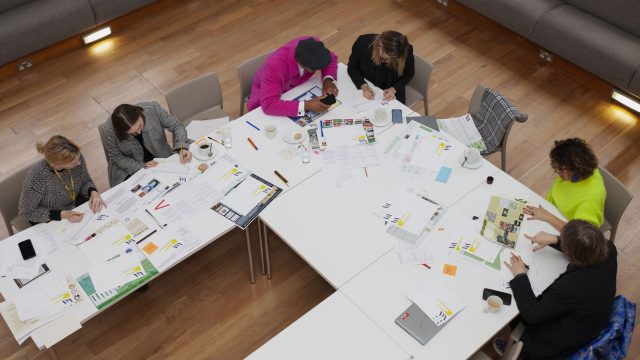On Saturday 30 April, Bhavani Esapathi, founder of The Invisible Labs – a social tech initiative helping those with incurable, invisible diagnosis live better lives – was invited to take part in our monthly Digital Design Drop-In programme and share her work with the public.
In this post, Bhavani discusses the projects presented at the session, which explore how invisible diseases are transforming the world of health as we know it, how technology could solve some of those problems and what people can do to help.

What can cultural industries do for healthcare?
I sat down last Saturday in the busy Sculpture gallery at The V&A void of any specific expectations but with an unhinged sense of curiosity to experience what it’s like to talk about healthcare in a museum space?
The idea was simple, set up a space that showcases some of the work we are doing at The Invisible Labs as part of Digital Design Drop-in session and wait, wait for people passing by to ask ‘what are you doing here?’.
What was on display?
It wasn’t artwork, it wasn’t something incredibly pretty but it was intriguing for sure. “Ideas come from curiosity” and if that’s enough for Walt Disney I can comfortably subscribe to the idea that art is anything that incites curiosity and that’s exactly what The Invisible Labs is about — to incite curiosity into the human condition and explore the possibilities lying trapped within the impossible.
On display was the Crohn’s Eat Out Map (London, beta version) that helps those with IBD know at a touch of a button where they can go to find places that accommodates an IBD-friendly or low-residue diet. And The Invisible Health Data Project which seeks to capture the everyday, lived challenges of someone with a chronic condition. On the side, for anyone deeply curious was Chronically Driven; the storytelling project which began all of this where we share real life stories by those living with incurable, invisible diseases and how they have transformed their lives for the better.
Why is any of this important?
I would take notice now given that the progressive rise in Autoimmune (Invisible) Diseases has been well documented by the author Donna Nakazawa in ‘The Autoimmune Epidemic’ but what interests me particularly are the hitherto unexplored aspects of these conditions, while scientists are busy getting to the depths of what causes these and what can be done about it, we at The Invisible Labs are driven by how we can help those with these conditions this very second. This enormous task isn’t one for an individual to take on or even a dedicated community who are at the heart of everything we do and that’s where cultural spaces and initiatives such as V&A’s Digital Design Drop-in events come into play.
Almost every single person I met had no idea what Invisible Diseases were, let alone Autoimmune Conditions except one person who wasn’t entirely comfortable talking about personal experiences. Although every single person wanted to know more about the project, with several people taking part in the data project and several more excited for the Crohn’s Map because they have friends or knew someone within their family who has trouble eating out be it due to IBD or Coeliac Disease (something I hadn’t considered myself).
What was initially a daunting thought of vulnerably sitting in a crowded museum as passing crowd judges you (positively or negatively) turned into a collective open dialogue that I have a feeling was only possible because of the space we were in. Think about it, how often do you stop at a stranger in the middle of the street or even in any other kinds of spaces to ask them what they are doing? There’s something about galleries/museums that makes it possible to engage in open-minded conversations about anything from healthcare to life to wellbeing of our world.
In fact, healthcare appears so broken in unexpected junctures because of this very reason that conversations around healthcare are often clouded by those working within healthcare. As the Financial Times Columnist John Kay put it, ‘radical innovation rarely comes from within’ and that couldn’t be more true to creating better conditions for those with chronic diseases. If you like to know more on how the impact of insufficient treatment of Autoimmune Conditions extends beyond healthcare alone you should read this article on the RSA Blog ‘Redefining Health’ where I have gone into detail on the various socio-economics of letting chronic conditions stay invisible.
Findings of The Day
Healthcare especially Autoimmune Diseases are everybody’s concern, you might not realise how it is impacting your life but it most certainly is.
Museums & gallery spaces are thriving ground to have conversations around health and well-being because creative pursuits have always been in search of finding better ways of living.
Innovation or change is driven from outside sectors where uninhibited thoughts flourish.
Museums are no longer spaces of storing our archival history but of creating a future that represents collective desires in reinventing what cultural industries are capable of doing.
The Digital Design Drop-in is a monthly, show & tell programme inviting artists, designers, makers, technologists and other professionals to share and discuss their work with the public.




